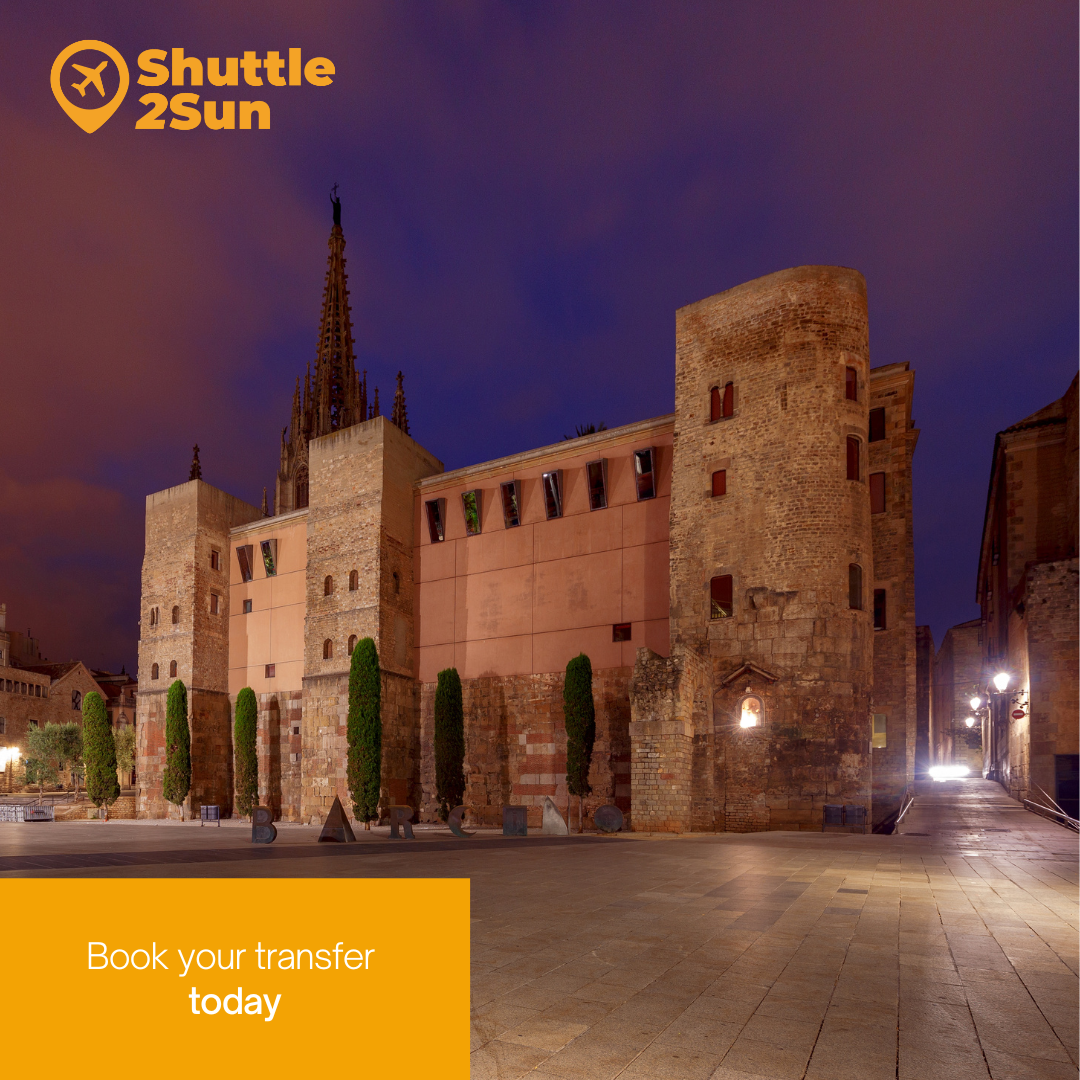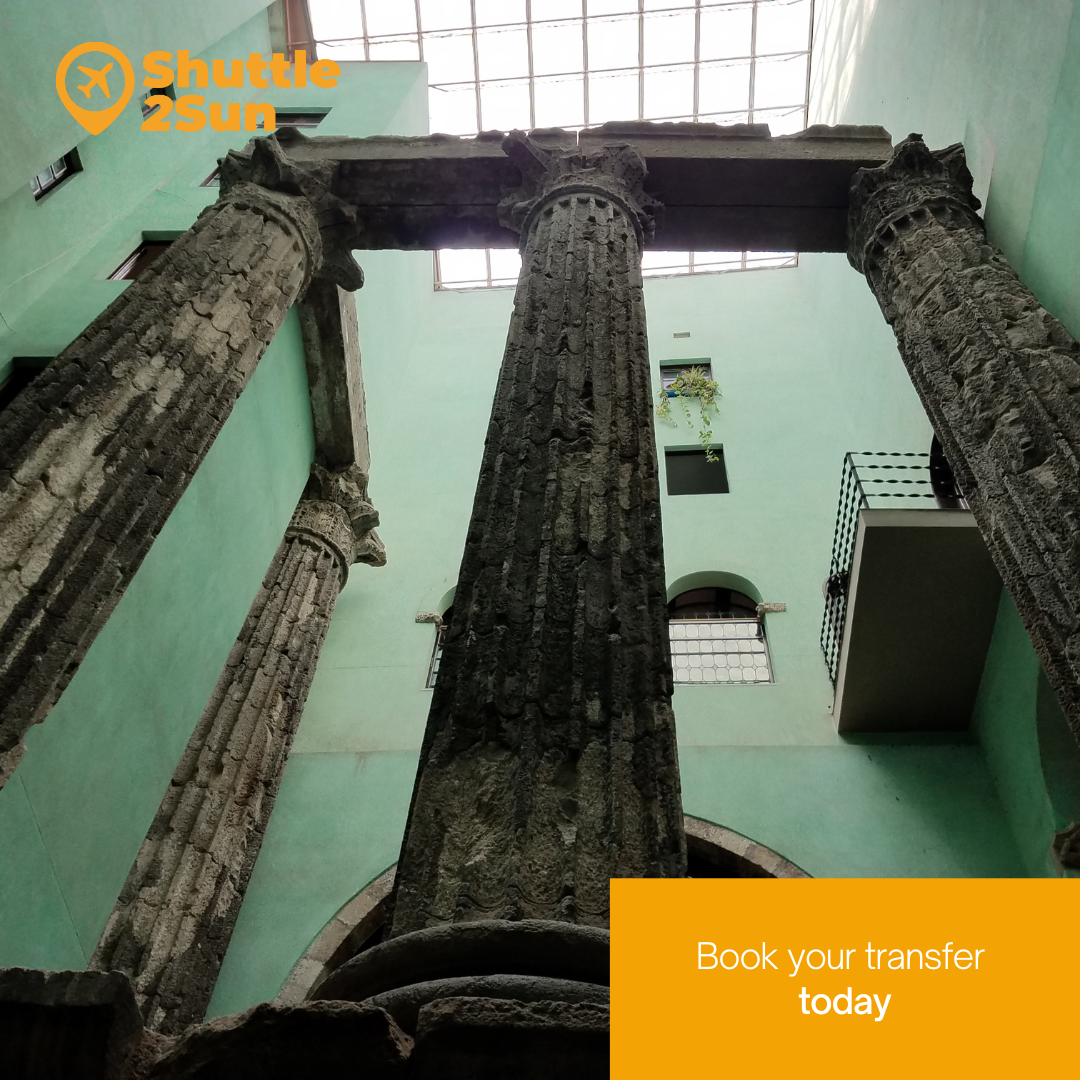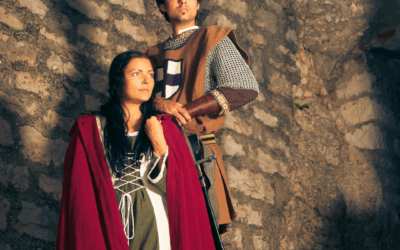Barcelona, as we know it today, is one of the cosmopolitan cities par excellence, thanks to the great weight of tourism in its economy. But that’s not all; millions of people visit it every day to discover its architecture, culture and history, which enrich the city’s façade, providing it with an exuberant heritage that everyone wants to discover.
In this publication, we are going to take a trip through the Roman history of the city, from the first traces of population. This period marked the beginning of an era of growth for the city, which continued until the Barcelona of today, passing through the most representative periods that have left their mark on the city’s development, to end up being what it is today, a city that is a reference point throughout Europe and internationally renowned.
If you are thinking of travelling to Barcelona to know its historical heritage, you must consider that Shuttle2Sun offers its private transfer services and shared transfer services, low-cost and sustainable, so you can move to Barcelona from Barcelona airport, Barcelona port, Girona airport and the Camp de Tarragona AVE train station.
Roman Barcino
Although the area where Barcelona is located today was occupied by prehistoric people since the Neolithic period, the growth of the city began with the arrival of the Romans, who turned the territory into an imperial city between the 1st century B.C. and the Middle Ages.
The reason why they chose the Barcelona area to settle was because they found a suitable space between Emporiae (Empúries), in the north of Catalonia, and Tarraco, now known as Tarragona, further south. Specifically, they chose the peak of Mons Taber, facing the sea, to control the entire plain between the Besòs and Llobregat deltas, where Plaça Sant Jaume is today, and very close to where, centuries later, it was decided to locate Barcelona Cathedral.
The Roman colony was called Iulia Augusta Faventia Faventia Paterna Barcino, and it was walled around the 1st and 2nd centuries, and was subsequently reinforced, increasing the thickness of its walls and its height, as well as erecting up to 75 watchtowers. You can consult the walled area at this link.
One of the most important moments in Barcelona’s Roman period was when the Visigothic king Ataulfus decided to move to Barcino with his wife Gala Placidia around the 5th century, at the end of the Roman Empire, until he was finally assassinated a few years later.

Visiting the Roman remains
Today, we can visit some of the remains of this great wall that delimited the city in some parts of the Gothic Quarter, such as Plaça Nova, where four towers are preserved; Plaça de Ramon Berenguer, with a large section of the fortification; Plaça dels Traginers, with another watchtower; and the Porta del Mar, currently located inside the Pati Llimona Civic Centre, where you can also visit the remains of the port baths, dating from the 1st century.
The structure of the streets of Roman Barcino can also be visited today. It consisted of a forum in the centre, from which arose two perpendicular streets, in the shape of a cross, which connected the 4 access gates to the wall: Porta Sinistrade, Porta Dextra, Porta Praetoria and Porta Decumana or Porta del Mar. These were linked by carrer de la Llibreteria, which was the old cardus, crossing the city from north to south; and by Carrer del Bisbe de la Ciutat and Carrer del Regomir, which were the decumanus, crossing the city from east to west.

Remember that Shuttle2Sun offers its private transfer services and shared transfer services to Barcelona, from Barcelona airport, Barcelona port, Girona airport and the Camp de Tarragona AVE train station.
Another Roman element not to be missed during your visit to Barcelona are the columns of the Temple of Augustus, which are preserved in the courtyard of a Gothic palace in Carrer del Paradís. You can see up to four columns, some 9 metres high, one of which was rebuilt in Plaça del Rei, where it remained until 1956, and which was finally moved to where the other three were located.
This space was built in sandstone from the mountain of Montjuïc at the end of the 1st century, and for the next 400 years it presided over the forum, which was the main open public square where all the political, administrative and religious life of the city took place.
You can also explore its streets, thanks to the archaeological remains that make up the Monumental Ensemble of Plaça del Rei, within the Museum of the History of Barcelona (MUHBA), which includes Roman Barcino, as well as Visigothic Barchinona, from the 7th century, and medieval Barcelona, from the 13th century, which we will see later. This museum also houses a large Roman domus, a house built in the 4th century, following the usual style of a Roman villa, with its interior courtyard and various rooms around it, as well as private baths.
On the other hand, in Plaza de la Vila de Madrid, outside the area delimited by the wall, is the Via Sepulcral Romana, which consisted of a necropolis, built from the 1st century onwards, which had tombs of people from the working classes. Today, you can see up to 70 tombs from between the 1st and 3rd centuries AD, which have different morphologies, from rounded tombs to arches and stelae.
If you want to discover all the secrets of Roman Barcino, with Shuttle2Sun‘s private transfer services and shared transfer services, low-cost and sustainable, you will be able to move, in a comfortable and fast way, to Barcelona, from Barcelona airport, Barcelona port, Girona airport and the Camp de Tarragona AVE train station.



